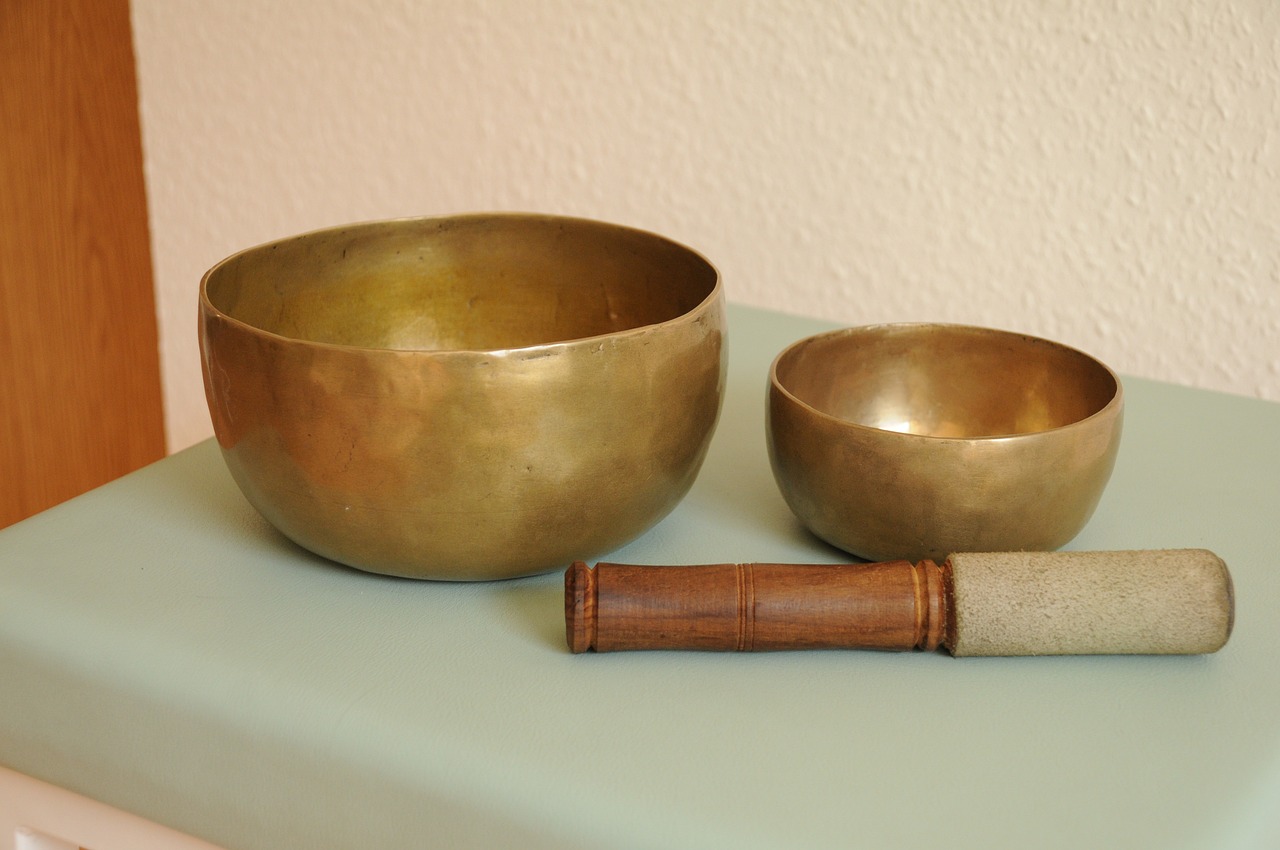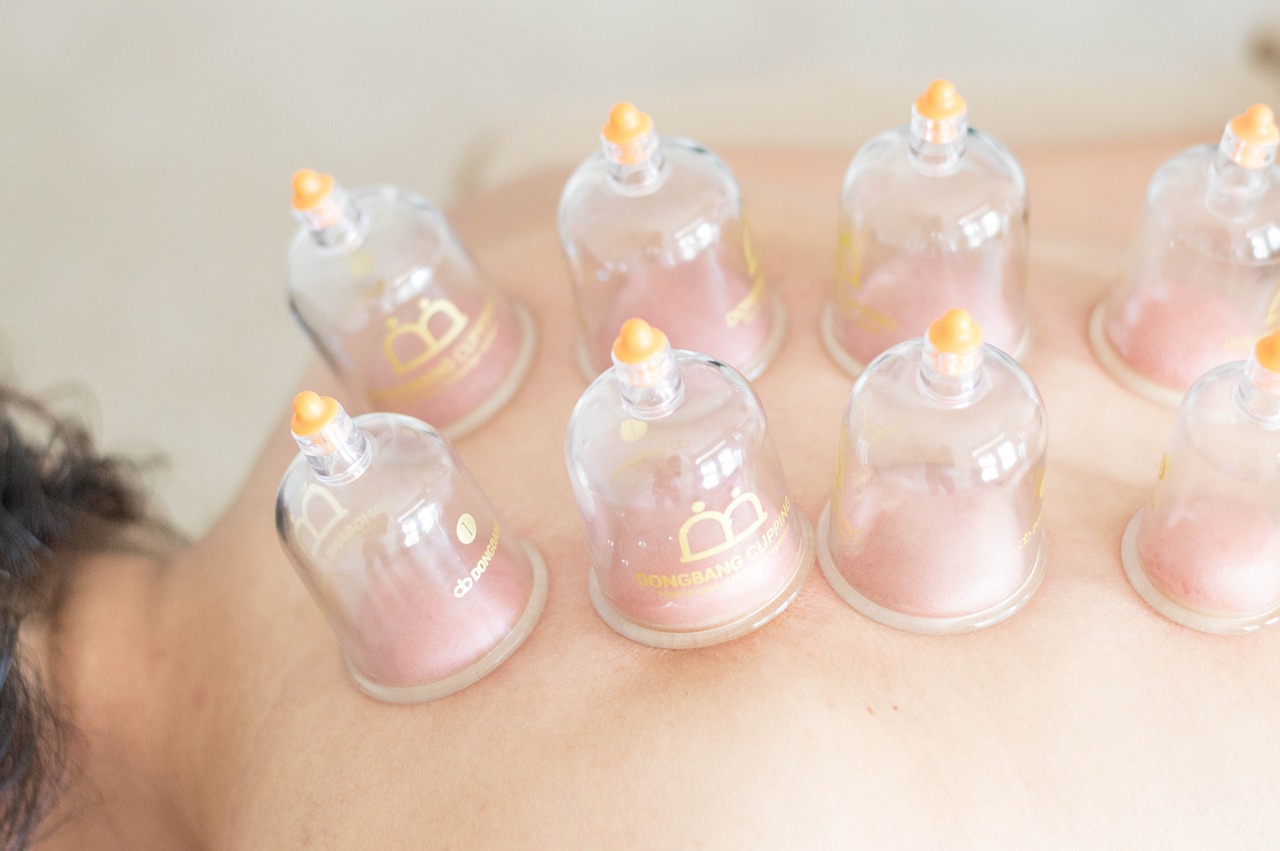This article explores the significance of Asian foot massage techniques in promoting holistic health, detailing their benefits, methods, and cultural importance. Discover how these practices can enhance well-being and relaxation.
Understanding Asian Foot Massage
Asian foot massage is not just a luxury; it is a therapeutic practice deeply rooted in ancient traditions. Originating from various Asian cultures, it focuses on stimulating reflex points on the feet that correspond to different organs and systems in the body. This holistic approach is based on the belief that the feet are a map of the body, and by applying pressure to specific points, one can promote healing and balance.
Benefits of Foot Massage for Overall Health
- Improved Circulation: Regular foot massage enhances blood flow, which is essential for delivering nutrients and oxygen to cells. This improved circulation can lead to better overall health and vitality.
- Reducing Swelling and Pain: For those who spend long hours on their feet, foot massage can significantly alleviate discomfort and swelling. Techniques such as kneading and stroking can help reduce tension in the muscles.
- Boosting Immune Function: Some studies suggest that foot massage may stimulate the immune system, helping the body to fend off illnesses more effectively.
- Stress Relief and Relaxation: The calming effects of foot massage are well-documented. It can lower cortisol levels and promote a sense of peace and relaxation, making it an excellent stress-relief tool.
Key Techniques in Asian Foot Massage
- Reflexology: This technique involves applying pressure to specific reflex points on the feet. Reflexology is believed to improve energy flow and enhance overall health.
- Shiatsu Foot Massage: Originating from Japan, this method focuses on applying pressure to key points, promoting balance and relaxation throughout the body.
Cultural Significance of Foot Massage in Asia
Foot massage holds profound cultural significance in many Asian societies. It is often seen as a communal activity that fosters connection and well-being. Traditional practices emphasize the importance of self-care and the healing properties of touch, reflecting cultural values that prioritize health and harmony.
How to Incorporate Foot Massage into Your Routine
Integrating foot massage into your daily routine can be simple and rewarding. Consider setting aside time each evening for a self-massage, using essential oils or lotions to enhance the experience. You can also learn basic techniques to share with family and friends, making it a bonding experience that promotes health and relaxation.

Understanding Asian Foot Massage
Asian foot massage is not merely a luxury; it is a therapeutic practice deeply embedded in ancient traditions. Originating from various Asian cultures, this practice focuses on stimulating the feet’s reflex points, which correspond to different organs and systems in the body. By applying pressure to these reflex points, practitioners aim to promote healing and restore balance within the body.
The origins of Asian foot massage can be traced back thousands of years, with roots in traditional Chinese medicine. Ancient texts indicate that foot massage was used as a form of preventive care and healing, reflecting a holistic approach to health that emphasizes the interconnectedness of the body and mind. This practice is not only about physical touch; it embodies a philosophy that prioritizes well-being through natural means.
At the heart of Asian foot massage lies the concept of Qi (or “Chi”), which is believed to be the vital energy that flows through the body. Blockages or imbalances in Qi can lead to health issues. By targeting specific reflex points on the feet, practitioners seek to unblock Qi pathways, facilitating a smoother flow of energy and promoting overall health.
Different cultures have their unique techniques and methods. For instance, the Thai foot massage incorporates stretching and acupressure, while Chinese reflexology focuses on precise pressure application. Each method is designed to enhance the body’s natural healing processes, making foot massage an essential component of holistic health.
In summary, Asian foot massage is a rich, cultural practice that combines ancient wisdom with therapeutic techniques. Understanding its origins and philosophies allows individuals to appreciate the profound benefits it offers, not only for physical health but also for mental and emotional well-being.
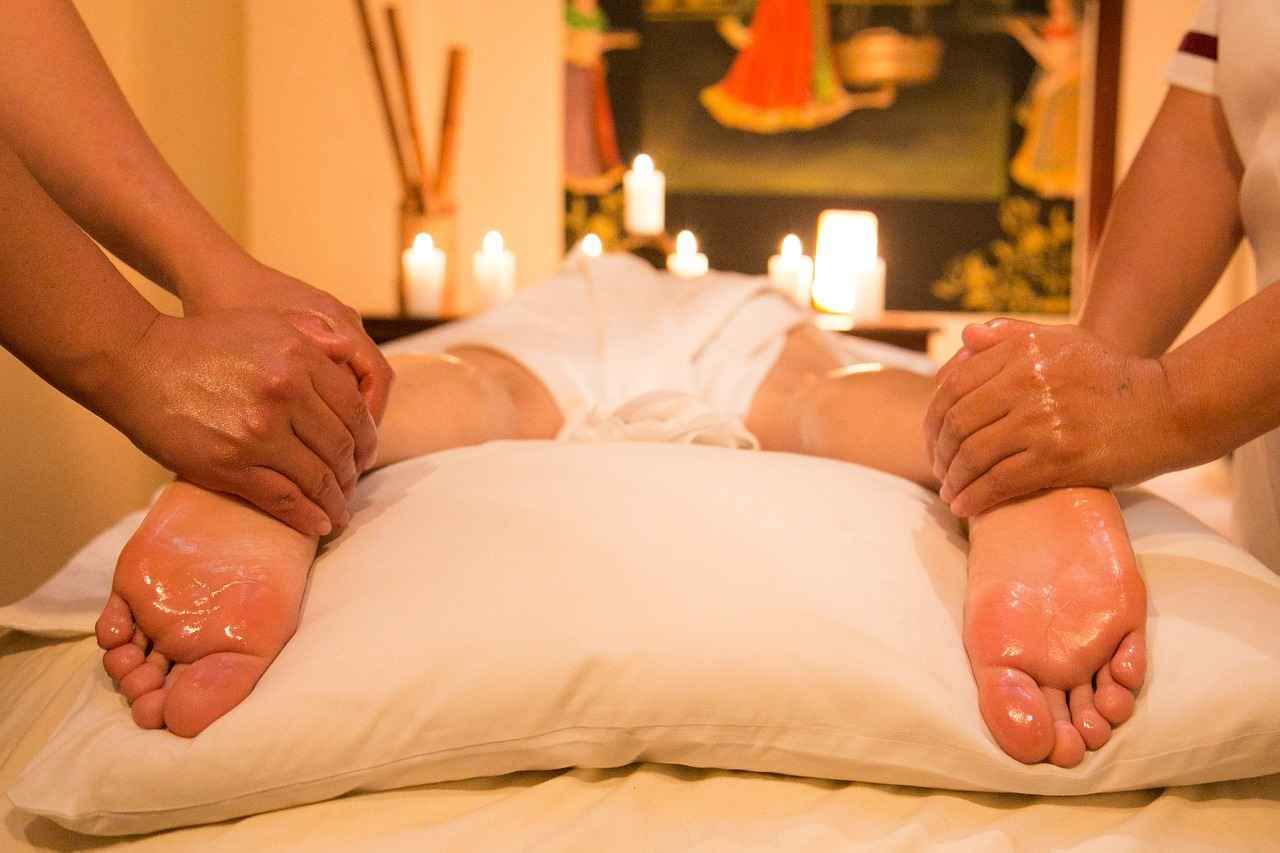
Benefits of Foot Massage for Overall Health
Foot massage is not merely a luxurious indulgence; it is a holistic practice that offers a multitude of health benefits. By focusing on the feet, which are rich in nerve endings and reflex points, foot massage can significantly improve various aspects of well-being. This section delves into the profound effects of foot massage on overall health, emphasizing its importance in modern wellness routines.
One of the most notable benefits of foot massage is improved circulation. As pressure is applied to the feet, blood flow is stimulated, which helps deliver oxygen and nutrients to various parts of the body. This enhanced circulation can lead to better heart health and a reduction in the risk of cardiovascular issues. Regular foot massage sessions can be particularly beneficial for individuals with sedentary lifestyles or those who spend long hours on their feet.
In our fast-paced world, stress has become a common ailment. Foot massage is a powerful tool for stress relief. The soothing pressure applied during the massage helps release tension and promotes relaxation. Furthermore, this relaxation can lead to enhanced mental clarity. By alleviating stress, foot massage can improve focus and cognitive function, making it easier to tackle daily challenges.
Foot massage is particularly effective in reducing pain and discomfort. For individuals who suffer from conditions like plantar fasciitis, arthritis, or general foot fatigue, targeted massage techniques can provide significant relief. By addressing specific pressure points, foot massage helps to alleviate tension and reduce swelling, making it an essential practice for those with chronic pain.
Emerging studies suggest that foot massage may also play a role in boosting immune function. The relaxation induced by massage can lead to a decrease in stress hormones, which, in turn, may enhance the body’s ability to fight off illness. This benefit is particularly crucial in maintaining overall health and well-being.
In summary, incorporating foot massage into your wellness routine can yield significant health benefits. From improved circulation and stress reduction to pain relief and enhanced immune function, the advantages are numerous. Whether performed by a professional or as a self-care practice at home, foot massage is a simple yet effective way to enhance your overall health.
Improved Circulation
When it comes to enhancing overall health, plays a pivotal role. Regular foot massage is a powerful technique that stimulates blood flow, which is essential for transporting nutrients and oxygen throughout the body. This section will explore how enhanced circulation can lead to various positive health outcomes.
One of the most significant benefits of improved circulation is the reduction of fatigue. When blood circulates efficiently, it helps deliver oxygen and nutrients to muscles and organs, which can lead to increased energy levels. Individuals who experience chronic fatigue may find that regular foot massages can help rejuvenate their bodies and promote a greater sense of vitality.
Moreover, enhanced circulation can greatly contribute to better skin health. Improved blood flow helps nourish skin cells, promoting a healthy glow and potentially reducing the appearance of blemishes and wrinkles. This is particularly beneficial for those dealing with conditions such as acne or eczema, as it can help in the healing process.
In addition to these benefits, improved circulation can also aid in detoxification. As blood flow increases, it helps flush out toxins and waste products from the body more effectively. This process is vital for maintaining optimal health and can support various bodily functions, including digestion and metabolism.
Furthermore, enhanced circulation can play a crucial role in pain management. Individuals suffering from conditions such as arthritis or muscle soreness may experience relief as foot massage promotes better blood flow to affected areas, reducing inflammation and discomfort.
Lastly, regular foot massage can positively impact mental health. As circulation improves, so does the delivery of oxygen to the brain, which can enhance cognitive function and mood. This holistic approach to health emphasizes the interconnectedness of physical and mental well-being.
In summary, the benefits of improved circulation through regular foot massage are profound, influencing various aspects of health and wellness. From reducing fatigue and enhancing skin health to aiding detoxification and pain management, the advantages are numerous and significant.
Reducing Swelling and Pain
Foot massage is a powerful technique that can significantly alleviate swelling and pain, particularly for individuals who spend long hours standing or engaged in physically demanding jobs. The feet, often referred to as the body’s foundation, bear the brunt of our daily activities, leading to discomfort and fatigue. Understanding how to effectively use foot massage techniques can provide relief and enhance overall well-being.
One of the primary methods for reducing discomfort is through targeted pressure application. By focusing on specific reflex points on the feet, practitioners can stimulate circulation and promote lymphatic drainage, which is essential for reducing swelling. These reflex points correspond to various organs and systems within the body, making foot massage not only a localized treatment but also a holistic approach to health.
- Techniques for Reducing Swelling:
- Thumb Walking: This technique involves using the thumbs to apply pressure along the length of the foot, particularly on the arch. This method helps to improve blood flow and reduce tension.
- Knuckling: Using the knuckles to knead the foot can provide deeper pressure, which is beneficial for breaking down tension and promoting relaxation.
- Stretching: Gently stretching the toes and the foot can help relieve tightness and improve flexibility, contributing to reduced pain.
In addition to these techniques, incorporating essential oils such as peppermint or lavender can enhance the massage experience. These oils not only provide a soothing aroma but also have anti-inflammatory properties that can further assist in reducing swelling and pain.
Regular foot massages can lead to improved overall health, making it an essential practice for those who experience discomfort due to prolonged standing or physical activity. By integrating these techniques into a routine, individuals can enjoy lasting relief and a greater sense of well-being.
Boosting Immune Function
Recent studies indicate that foot massage can significantly enhance the body’s immune function. This intriguing connection arises from various physiological mechanisms that promote overall health and well-being. Understanding these mechanisms not only sheds light on the benefits of foot massage but also emphasizes its importance in holistic health practices.
One of the primary ways foot massage boosts the immune system is through the stimulation of lymphatic flow. The lymphatic system plays a crucial role in transporting immune cells throughout the body. By applying pressure to specific points on the feet, massage techniques can enhance lymph circulation, facilitating the removal of toxins and pathogens. This increased flow allows the immune system to respond more effectively to infections and diseases.
Additionally, foot massage has been shown to reduce stress hormones such as cortisol. High levels of stress can negatively impact immune function, making the body more susceptible to illness. By promoting relaxation and reducing stress, foot massage indirectly supports the immune system, allowing it to function optimally. This stress-relieving effect is particularly beneficial for individuals dealing with chronic stress or anxiety.
Moreover, foot massage can enhance blood circulation, which is vital for delivering essential nutrients and oxygen to immune cells. Improved circulation ensures that these cells are well-equipped to defend the body against infections. Techniques such as reflexology specifically target areas of the foot that correspond to various organs and systems, potentially enhancing their function.
Incorporating regular foot massage into your wellness routine can provide a holistic approach to maintaining a robust immune system. Whether performed by a professional or through self-massage techniques at home, this practice can serve as a valuable tool for enhancing overall health and resilience.
Stress Relief and Relaxation
Foot massage is a time-honored practice known for its profound effects on both the body and mind. One of the most significant benefits of foot massage is its ability to provide stress relief and promote deep relaxation. In today’s fast-paced world, where stress is often a constant companion, incorporating regular foot massage into your routine can be a transformative experience.
The psychological benefits of foot massage extend beyond mere relaxation. The act of massaging the feet stimulates the release of endorphins, the body’s natural painkillers and mood elevators. This biochemical reaction can lead to a noticeable reduction in anxiety and tension, allowing individuals to feel more at ease. Furthermore, the rhythmic motion of the massage can create a sense of mindfulness, encouraging individuals to focus on the present moment and detach from daily stressors.
Moreover, foot massage can also enhance sleep quality, which is crucial for mental well-being. By promoting relaxation and reducing stress, it can help individuals fall asleep faster and enjoy deeper, more restorative sleep cycles. This improved sleep can lead to increased energy levels and better overall mood during waking hours.
In addition, many people report a heightened sense of self-awareness and connection to their bodies after a foot massage. This practice encourages individuals to listen to their bodies and recognize areas of tension or discomfort, fostering a greater understanding of their physical and emotional states.
In summary, the psychological benefits of regular foot massage are substantial. From reducing stress and anxiety to enhancing sleep quality and self-awareness, this simple yet effective practice can significantly improve mental health and overall well-being. By making foot massage a part of your routine, you can cultivate a more relaxed and balanced life.
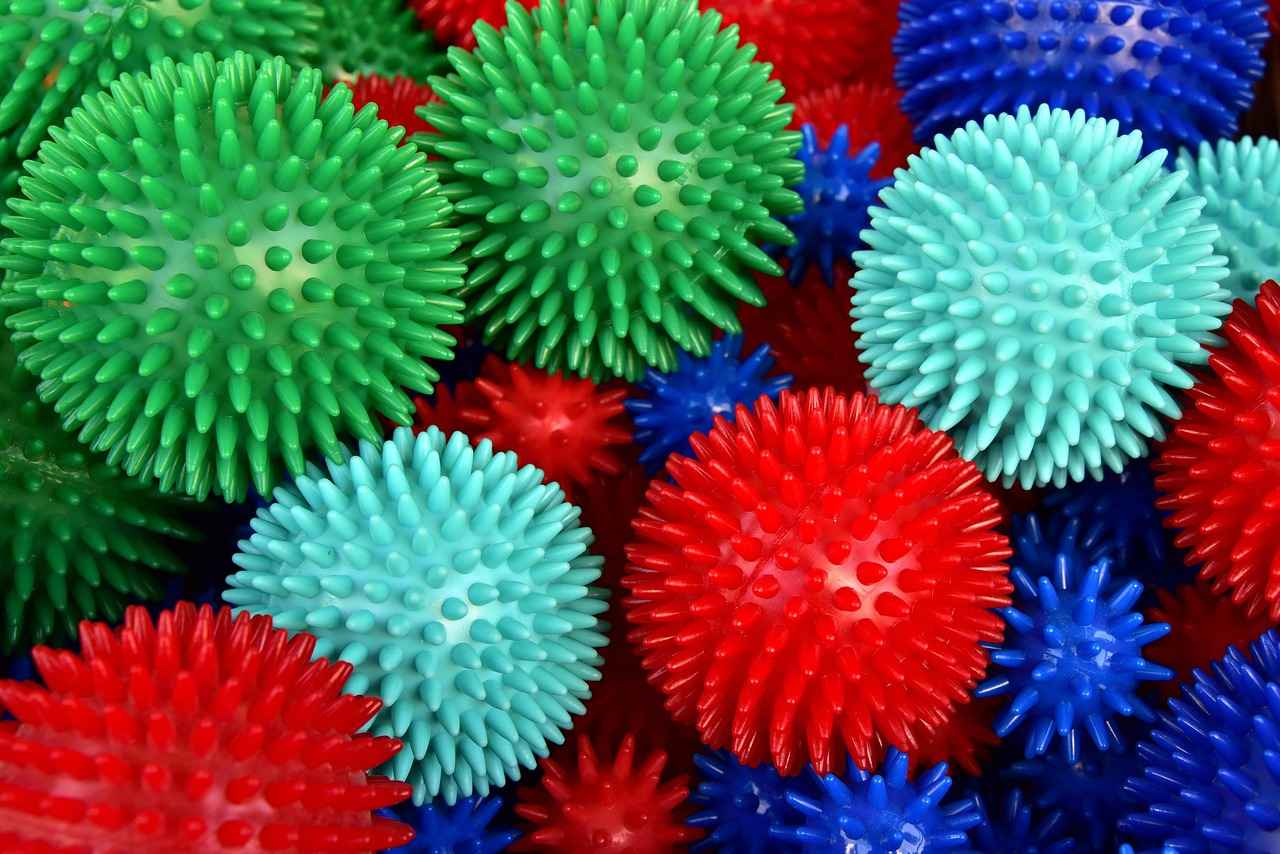
Key Techniques in Asian Foot Massage
Asian foot massage encompasses a variety of techniques, each offering distinct benefits that contribute to holistic health. By understanding these methods, individuals can choose the right approach to enhance their well-being.
- Reflexology: This ancient technique is based on the principle that specific points on the feet correspond to different organs and systems in the body. By applying pressure to these reflex points, reflexology aims to promote healing and balance. Regular sessions can lead to improved circulation, reduced tension, and enhanced overall vitality.
- Shiatsu Foot Massage: Originating from Japan, Shiatsu involves applying finger pressure to specific points on the feet. This technique not only alleviates physical discomfort but also promotes emotional well-being. Shiatsu is known for its ability to reduce stress and anxiety, making it a popular choice for those seeking relaxation.
- Thai Foot Massage: This dynamic technique combines acupressure, reflexology, and yoga-like stretches. Thai foot massage is performed with the practitioner using their hands, thumbs, and sometimes even feet to stimulate the entire body. This method is particularly effective for enhancing flexibility and relieving muscle tension.
- Chinese Foot Massage: Rooted in Traditional Chinese Medicine (TCM), this method focuses on the flow of Qi (energy) throughout the body. By manipulating various points on the feet, practitioners aim to restore balance and harmony. This technique is often accompanied by herbal remedies to enhance its effects.
- Hot Stone Foot Massage: Incorporating heated stones, this technique promotes deep relaxation and improved blood flow. The warmth of the stones helps to ease muscle tension and enhance the massage experience, making it particularly beneficial for those with chronic pain or stress.
Each of these techniques not only targets physical ailments but also contributes to mental and emotional health, making Asian foot massage a holistic approach to wellness.
Reflexology
is a specialized form of foot massage that focuses on stimulating specific reflex points located on the feet. This ancient practice is based on the principle that these reflex points correspond to different organs and systems in the body. By applying pressure to these areas, reflexology aims to promote healing and balance, making it a vital component of holistic health.
The mechanism of reflexology is rooted in the belief that the feet are a microcosm of the entire body. Each area of the foot is linked to a particular organ or bodily function. For instance, the toes may correspond to the head, while the arch of the foot relates to the digestive system. By targeting these specific points, reflexologists aim to release tension, improve circulation, and enhance overall well-being.
One of the most significant health benefits of reflexology is its ability to reduce stress and promote relaxation. In today’s fast-paced world, many individuals experience chronic stress, which can lead to various health issues. Reflexology sessions can induce a state of deep relaxation, helping to alleviate anxiety and tension. This not only contributes to mental clarity but also supports emotional health.
Moreover, reflexology has been shown to improve circulation. By stimulating the reflex points, blood flow is enhanced, which can lead to better oxygenation of tissues and removal of toxins. This is particularly beneficial for individuals who spend long hours on their feet or those with sedentary lifestyles.
In addition to stress relief and improved circulation, reflexology may also aid in pain management. Many people find relief from chronic pain conditions, such as headaches or back pain, through regular reflexology treatments. The targeted pressure can help to alleviate discomfort and promote the body’s natural healing processes.
Overall, reflexology is a powerful technique that not only provides physical benefits but also supports mental and emotional health. By incorporating reflexology into your wellness routine, you can harness its potential to enhance your overall quality of life.
Shiatsu Foot Massage
is a unique and therapeutic approach to wellness that originates from Japan. This technique is deeply rooted in traditional Japanese medicine, which emphasizes the balance of energy within the body. Shiatsu, which translates to “finger pressure,” involves applying pressure to specific points on the body, particularly the feet, to promote relaxation and overall health.
The fundamental principle of Shiatsu is based on the concept of meridians—pathways through which energy, or “qi,” flows. By stimulating these meridian points on the feet, practitioners aim to release blockages and restore harmony within the body. This practice not only targets physical ailments but also addresses emotional and mental well-being.
One of the remarkable aspects of Shiatsu is its ability to reduce stress and enhance relaxation. As pressure is applied to the reflex points on the feet, it triggers a cascade of physiological responses. This can lead to a decrease in cortisol levels, the hormone associated with stress, thereby promoting a sense of calm and tranquility.
Moreover, Shiatsu foot massage is known to improve circulation, which is essential for maintaining healthy organ function and overall vitality. Enhanced blood flow can help deliver oxygen and nutrients to cells more efficiently, supporting the body’s natural healing processes.
In addition to its physical benefits, Shiatsu also plays a significant role in enhancing mental clarity. Many individuals report feeling more focused and alert after a session, which can be attributed to the relaxation and stress relief that Shiatsu provides. This makes it an excellent practice for those who lead busy lives and seek a moment of peace.
Incorporating Shiatsu foot massage into your wellness routine can be a transformative experience. Whether performed by a trained practitioner or through self-massage techniques at home, the benefits are profound and far-reaching. By understanding and embracing the principles of Shiatsu, individuals can take proactive steps towards achieving holistic health and well-being.

Cultural Significance of Foot Massage in Asia
Foot massage is not merely a form of relaxation; it is a practice steeped in cultural significance across many Asian societies. This ancient technique has been utilized for centuries, embodying a rich tapestry of tradition and ritual that reflects the values and beliefs of various cultures.
The historical context of foot massage can be traced back to ancient civilizations, where it was often regarded as a form of healing. In China, for instance, the practice is intertwined with the principles of Traditional Chinese Medicine (TCM), which emphasizes the connection between the feet and the body’s overall health. According to TCM, the feet contain numerous reflex points that correspond to different organs, making foot massage a vital tool for promoting balance and well-being.
In addition to its health benefits, foot massage is often accompanied by specific rituals that enhance its cultural significance. For example, in Thailand, foot massage is frequently offered as part of a welcoming gesture, symbolizing hospitality and care. The act of massaging someone’s feet is seen as a way to honor and respect them, creating a profound bond between the giver and the receiver.
Furthermore, many Asian cultures incorporate foot massage into social gatherings and family traditions. It is common for families to come together and engage in foot massage as a form of bonding, fostering a sense of community and connection. This practice not only promotes physical relaxation but also serves as a means of strengthening relationships.
As we navigate the modern world, the popularity of foot massage continues to expand beyond its cultural roots. Today, many spas and wellness centers worldwide offer Asian foot massage techniques, adapting them to contemporary wellness trends. This evolution reflects a growing recognition of the practice’s holistic benefits, making it accessible to a broader audience.
Traditional Practices and Beliefs
surrounding foot massage are deeply embedded in the cultural fabric of many Asian societies. Understanding these beliefs not only enhances the appreciation for the techniques employed but also reveals the profound connection between foot massage and holistic health.
In various cultures, the feet are viewed as a reflection of one’s overall health and well-being. For instance, in Chinese culture, the practice of foot massage is intertwined with the principles of traditional Chinese medicine, which emphasizes the flow of Qi (energy) throughout the body. It is believed that stimulating specific reflex points on the feet can help to balance this energy, promoting physical and emotional healing.
Similarly, in Thai culture, foot massage is not just a form of relaxation but also a spiritual ritual. Practitioners often incorporate herbal compresses and aromatic oils, which are thought to enhance the therapeutic effects. This practice reflects a holistic approach that values the interconnectedness of body, mind, and spirit.
Moreover, foot massage is often considered a communal activity, reinforcing social bonds. In many Asian communities, families gather to enjoy foot massages together, fostering a sense of togetherness and cultural continuity. This shared experience highlights the importance of family and relationships in traditional practices.
Furthermore, the rituals associated with foot massage can vary significantly across different regions. For example, in Japan, the art of Shiatsu combines acupressure techniques with the philosophy of mindfulness, encouraging individuals to be present in the moment. This practice not only addresses physical ailments but also promotes mental clarity and emotional balance.
In conclusion, the traditional beliefs surrounding foot massage serve as a testament to its cultural significance. By exploring these practices, individuals can gain a deeper understanding of how foot massage reflects and reinforces cultural values, ultimately enhancing their appreciation for its techniques and benefits.
Modern Adaptations and Popularity
As the world becomes increasingly interconnected, the appreciation for Asian foot massage techniques has transcended cultural boundaries, gaining traction in various parts of the globe. This section explores the evolution of these ancient practices and how they have adapted to align with contemporary wellness trends.
In recent years, there has been a growing awareness of the importance of holistic health, leading many to seek alternative therapies that promote both physical and mental well-being. Asian foot massage, with its roots in traditional practices like reflexology and Shiatsu, offers a unique approach that resonates with modern consumers. These techniques are not merely about relaxation; they encompass a comprehensive understanding of the body’s energy pathways and reflex points.
With the rise of wellness centers and spas, Asian foot massage has been integrated into various treatment menus, often combined with other modalities such as aromatherapy and hot stone therapy. This fusion not only enhances the overall experience but also caters to the diverse needs of clients seeking stress relief and rejuvenation. Furthermore, the incorporation of modern technology, such as massage chairs and foot spas, has made these techniques more accessible to a wider audience, allowing individuals to enjoy the benefits of foot massage in the comfort of their homes.
Social media platforms and wellness influencers have played a pivotal role in popularizing these practices, showcasing the benefits of foot massage through engaging content and tutorials. This increased visibility has sparked interest among younger generations, who are eager to explore holistic health options that complement their busy lifestyles.
As Asian foot massage techniques continue to evolve, they remain deeply rooted in their cultural significance while adapting to meet the demands of a global audience. This dynamic interplay between tradition and modernity ensures that these practices will continue to thrive and be embraced by those seeking a path to enhanced well-being.
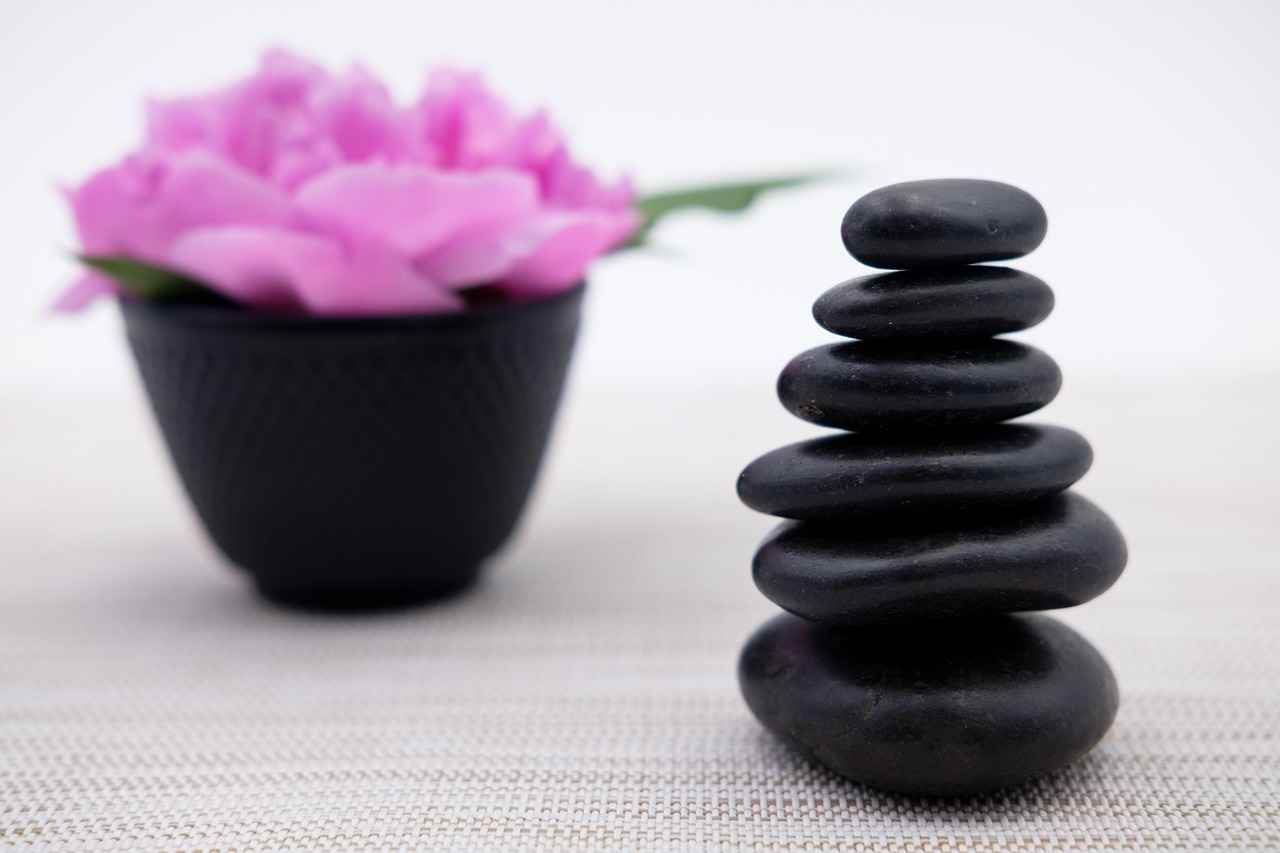
How to Incorporate Foot Massage into Your Routine
Incorporating foot massage into your daily routine can significantly enhance your overall well-being. This practice not only promotes relaxation but also provides numerous health benefits that can improve your quality of life. Here are some practical tips and techniques to help you integrate self-massage into your everyday activities.
- Set Aside Time: Dedicate a specific time each day for your foot massage, even if it’s just 10-15 minutes. This could be in the morning to energize your day or in the evening to unwind.
- Create a Relaxing Environment: Find a quiet, comfortable space where you can relax. Consider using soft lighting, calming music, or aromatherapy to enhance the experience.
- Use Massage Oils: Applying a few drops of essential oils, such as lavender or peppermint, can enhance the massage experience. These oils not only provide a soothing aroma but also have therapeutic properties that can aid relaxation.
To get started with self-massage, consider the following techniques:
- Basic Foot Rubbing: Begin by using your thumbs to apply gentle pressure on the arch of your foot. Move in circular motions, gradually working your way towards the heel and toes.
- Reflexology Points: Familiarize yourself with reflexology maps that indicate specific points on your feet corresponding to different body parts. Focus on these areas to promote healing and relaxation.
- Stretching Techniques: Incorporate gentle stretching of your toes and ankles to improve flexibility. Pulling your toes back and rotating your ankles can relieve tension.
Consistency is key when it comes to reaping the benefits of foot massage. By establishing a routine, you can enhance your physical and mental health, making it an integral part of your self-care regimen. Remember, even a few minutes a day can lead to significant improvements in your overall well-being.
Frequently Asked Questions
- What are the main benefits of Asian foot massage?
Asian foot massage offers a plethora of benefits, including improved circulation, reduced stress levels, and enhanced mental clarity. It’s like giving your body a mini-vacation, helping you feel rejuvenated and ready to tackle the day!
- How often should I get a foot massage?
For optimal benefits, consider indulging in a foot massage at least once a week. However, if you’re on your feet a lot or feeling particularly stressed, more frequent sessions can really help keep you balanced and relaxed.
- Can I perform foot massage techniques at home?
Absolutely! You can easily incorporate foot massage techniques into your daily routine. Simple methods like kneading or applying pressure to specific reflex points can be done while watching TV or relaxing at home.
- What is reflexology and how does it work?
Reflexology is a specialized foot massage technique that targets specific reflex points on the feet, corresponding to different organs and systems in the body. By applying pressure to these areas, you can promote overall health and well-being, almost like a roadmap to relaxation!
- Is foot massage safe for everyone?
While foot massage is generally safe, it’s best to consult with a healthcare professional if you have specific health concerns, such as diabetes or circulatory issues. Safety first, right?

